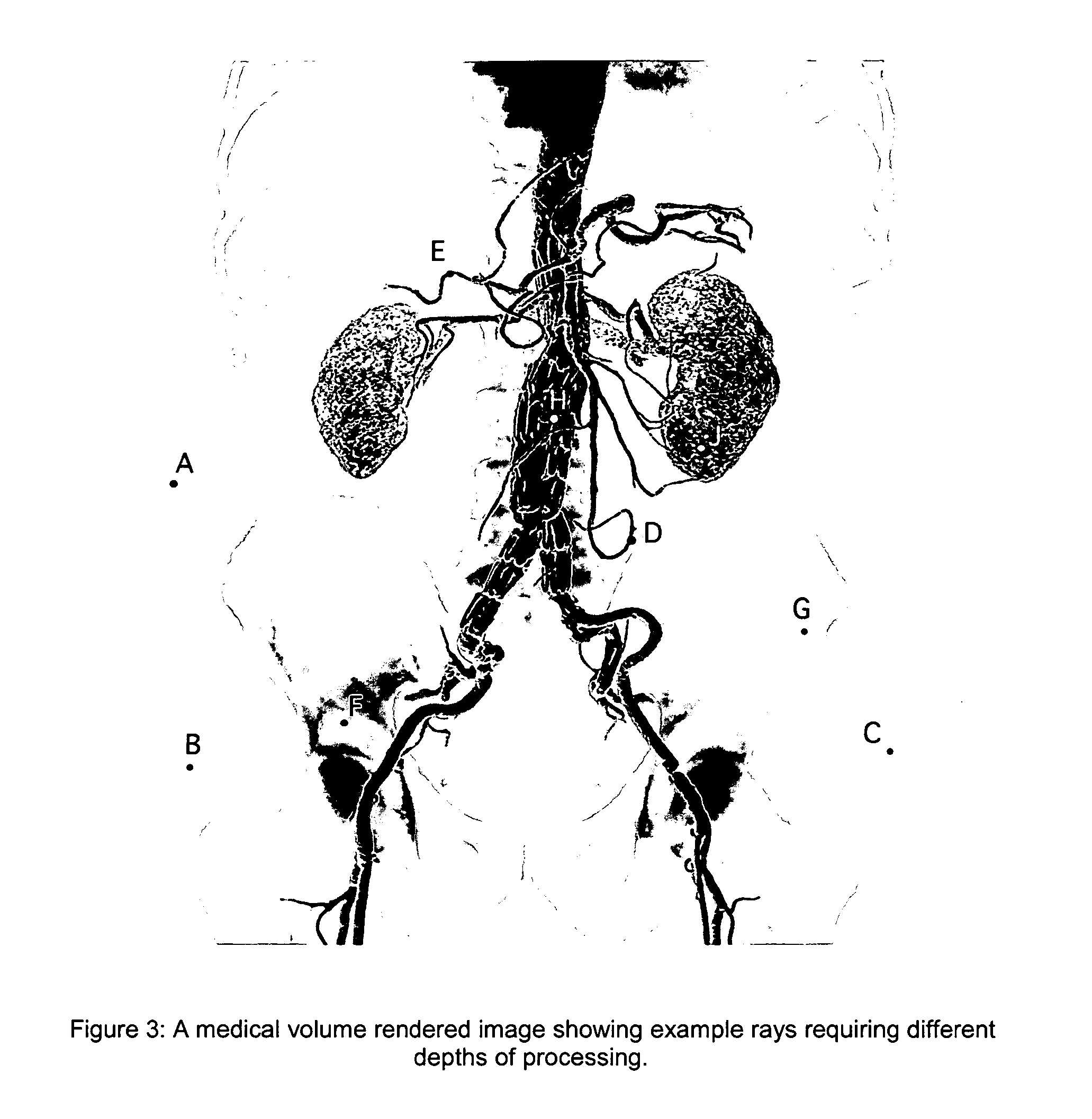Volume rendering apparatus and process
a volume rendering and volume technology, applied in the field of volume rendering, can solve the problems of degrading the performance of the volume rendering application, the limitations of the gpus discussed above, and the weak performance of the gpus
- Summary
- Abstract
- Description
- Claims
- Application Information
AI Technical Summary
Benefits of technology
Problems solved by technology
Method used
Image
Examples
example
[0119]FIG. 7 shows an example of volume rendering scene (simplified for illustration) where two ray blocks have the same internal configuration of sub-volumes. However, due to the arbitrary real-valued position of ray block projections within the rendered image, there is a fractional displacement of the ray grid with respect to each block. This means that, in principle, two separate scatter and gather maps need to be constructed. It is advantageous to overcome this issue and reuse the same scatter and gather maps.
[0120] In this situation, it is possible to re-use gather and scatter maps by considering each ray block in isolation and performing the gather operation into an intermediate image. First, each ray block is individually translated to an intermediate space, for example so that it lies as close as possible to the origin on the bottom right quadrant of the space. Then the ray block is rendered according to the present invention in that intermediate image space. It will be app...
PUM
 Login to View More
Login to View More Abstract
Description
Claims
Application Information
 Login to View More
Login to View More - R&D
- Intellectual Property
- Life Sciences
- Materials
- Tech Scout
- Unparalleled Data Quality
- Higher Quality Content
- 60% Fewer Hallucinations
Browse by: Latest US Patents, China's latest patents, Technical Efficacy Thesaurus, Application Domain, Technology Topic, Popular Technical Reports.
© 2025 PatSnap. All rights reserved.Legal|Privacy policy|Modern Slavery Act Transparency Statement|Sitemap|About US| Contact US: help@patsnap.com



